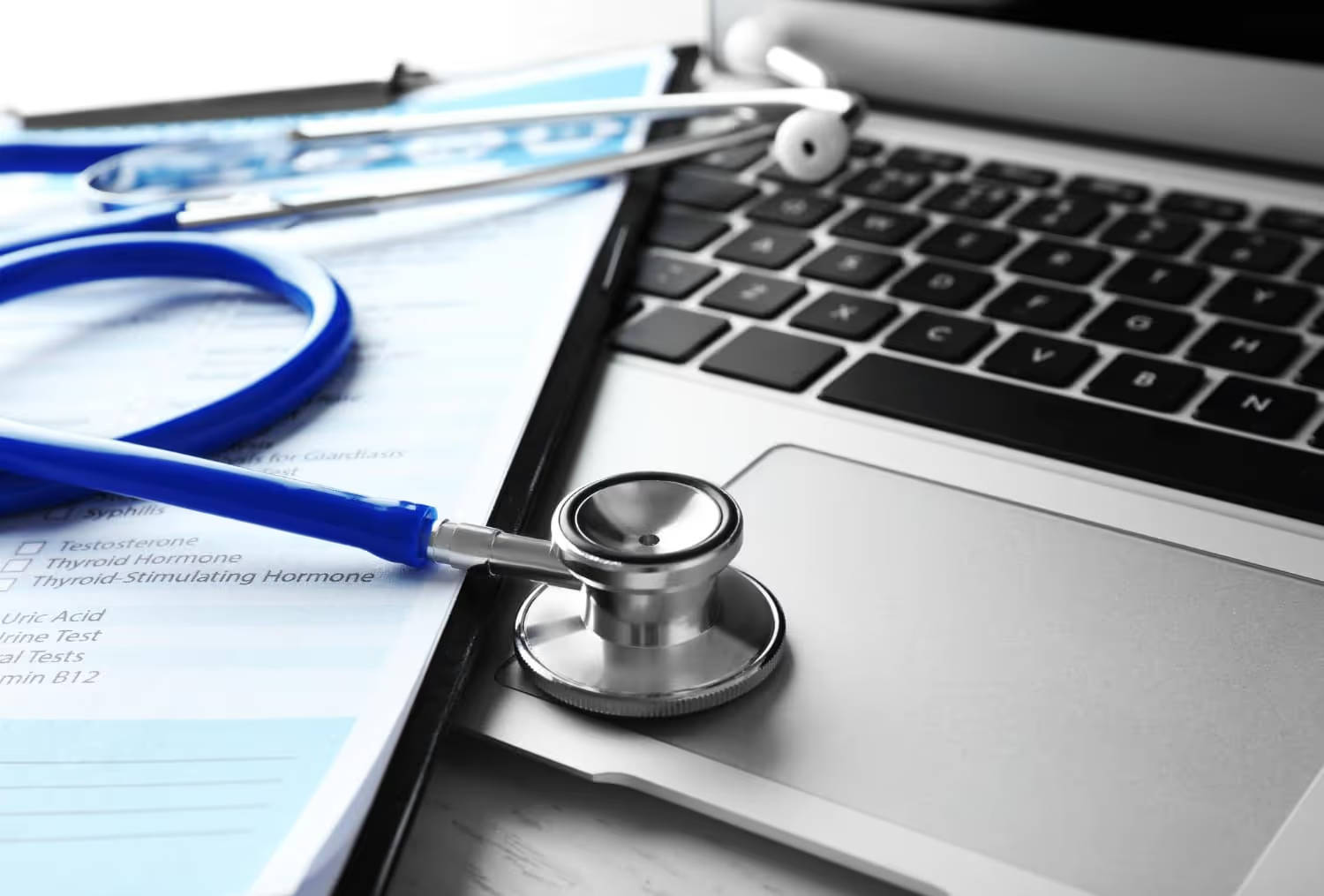How To Send an Invoice Through Email
Today, we will learn how to send a professional invoice email. Doing so will help improve your payment process and help you get paid on time.
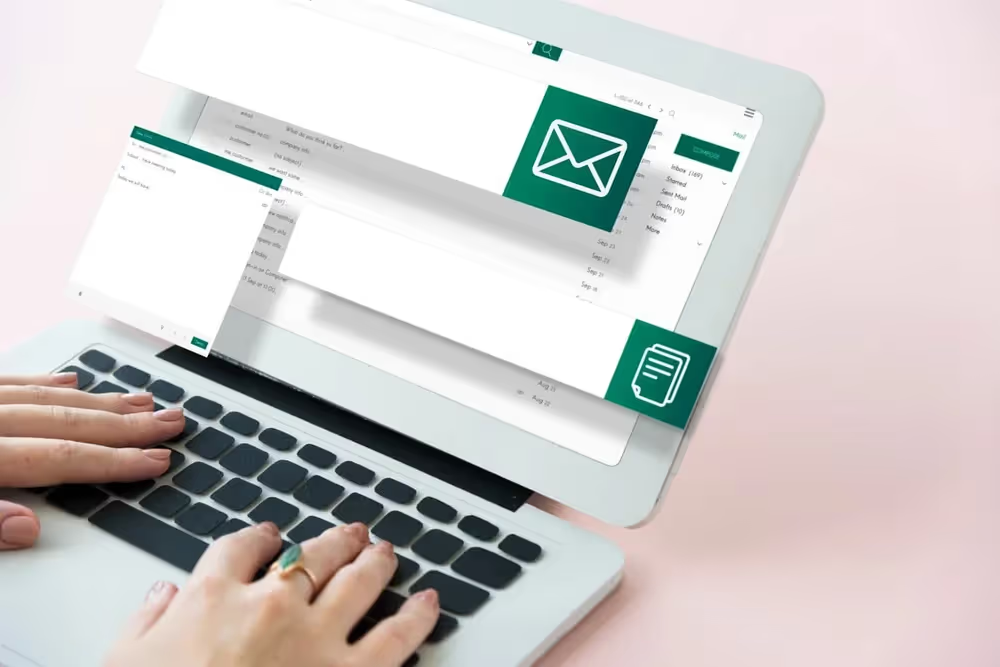
In 2023, the amount of email users grew to 4.37 billion. This number is set to continue to grow as email continues to be a preferred method of communication. With so many people using email, it’s important to understand that this inherently includes your client or customer base.
No matter what industry you are in, knowing how to send an invoice via email is an invaluable tool. Having the ability to reach a client via different methods increases the likelihood that they see the message and respond.
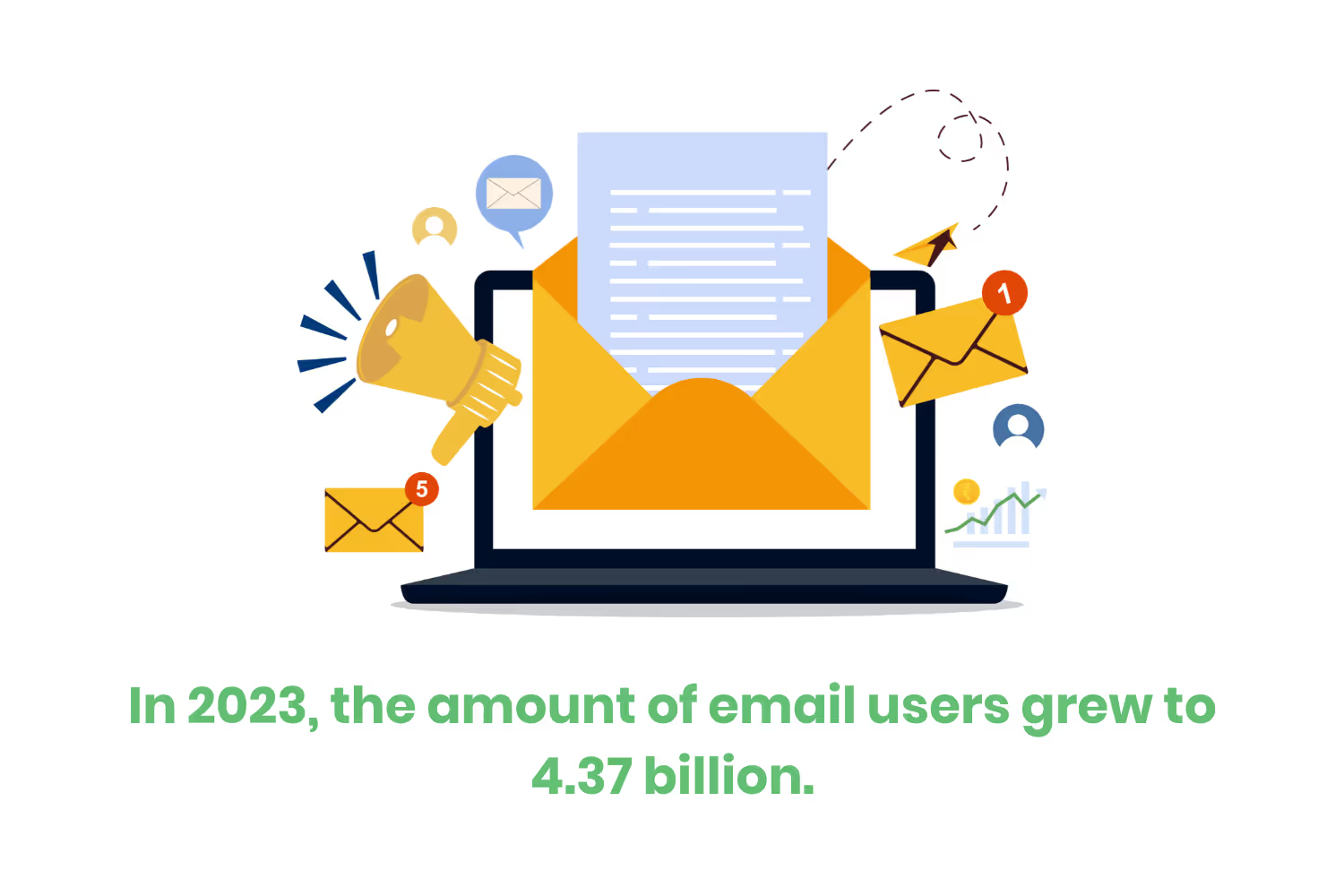
An invoice email not only serves as an avenue of communication but also can positively reflect your brand in the eyes of customers. Today, we will learn how to send a professional invoice email. Doing so will help improve your payment process and help you get paid on time.
What is an Invoice Email?
So what exactly is an invoice email? As a business, this is an electronic message that you send to a client who owes you a balance. The main purpose of the email is to request payment for whatever goods or services you provide.
A well-written invoice needs to include all necessary invoice details, like when the payment is due, so your client has everything they need to pay the invoice promptly. Let’s go over a few other essential items when it comes to writing a productive invoice.

How To Write an Invoice Email: The Structure of a Professional Message
The key to writing a professional email is to be clear, respectful, and thorough. You want to include as much information as possible so that your client is not confused about what to do or how to do it. The “it” in this situation is making a payment. A good invoice email message will typically cover the following:
- Clear email subject line.
- Friendly and personalized greeting.
- Reference to the invoice number and the due date.
- The invoice is attached to the email, ideally through a secure customer portal.
- Details about the payment methods accepted.
- Payment terms.
- A closing statement offering assistance for questions about the invoice.
Be sure to also include the total amount due and contact information for any questions about this invoice. Involving all of these details helps ensure that the invoice email includes all of the information your client or customer needs to make a payment.
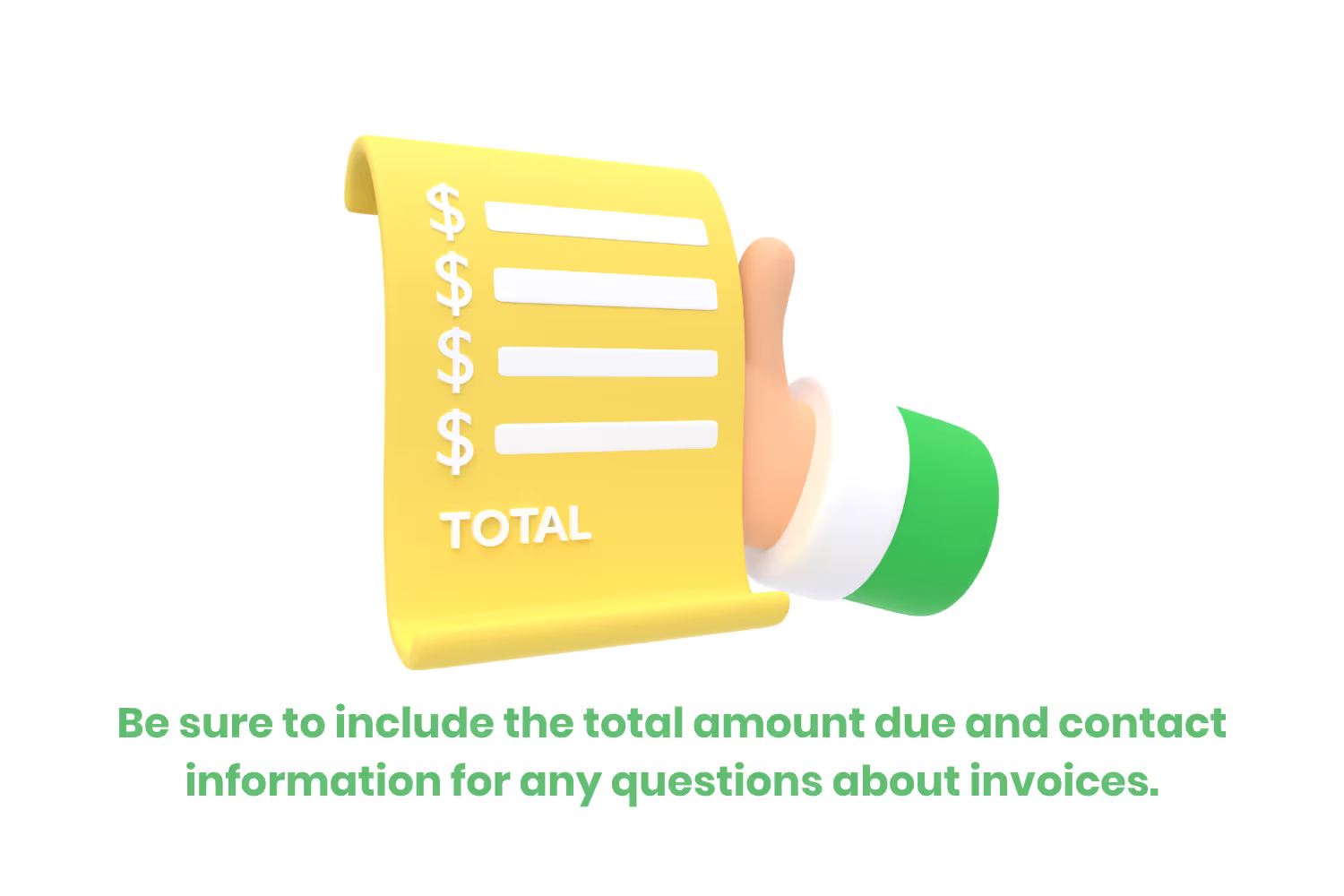
How To Attach the Invoice Document Properly
Always attach the invoice in a way that protects your client’s information. A standard invoice attached as a PDF is always an option, although there are times when sensitive information needs protecting. This is especially true if you work in healthcare.
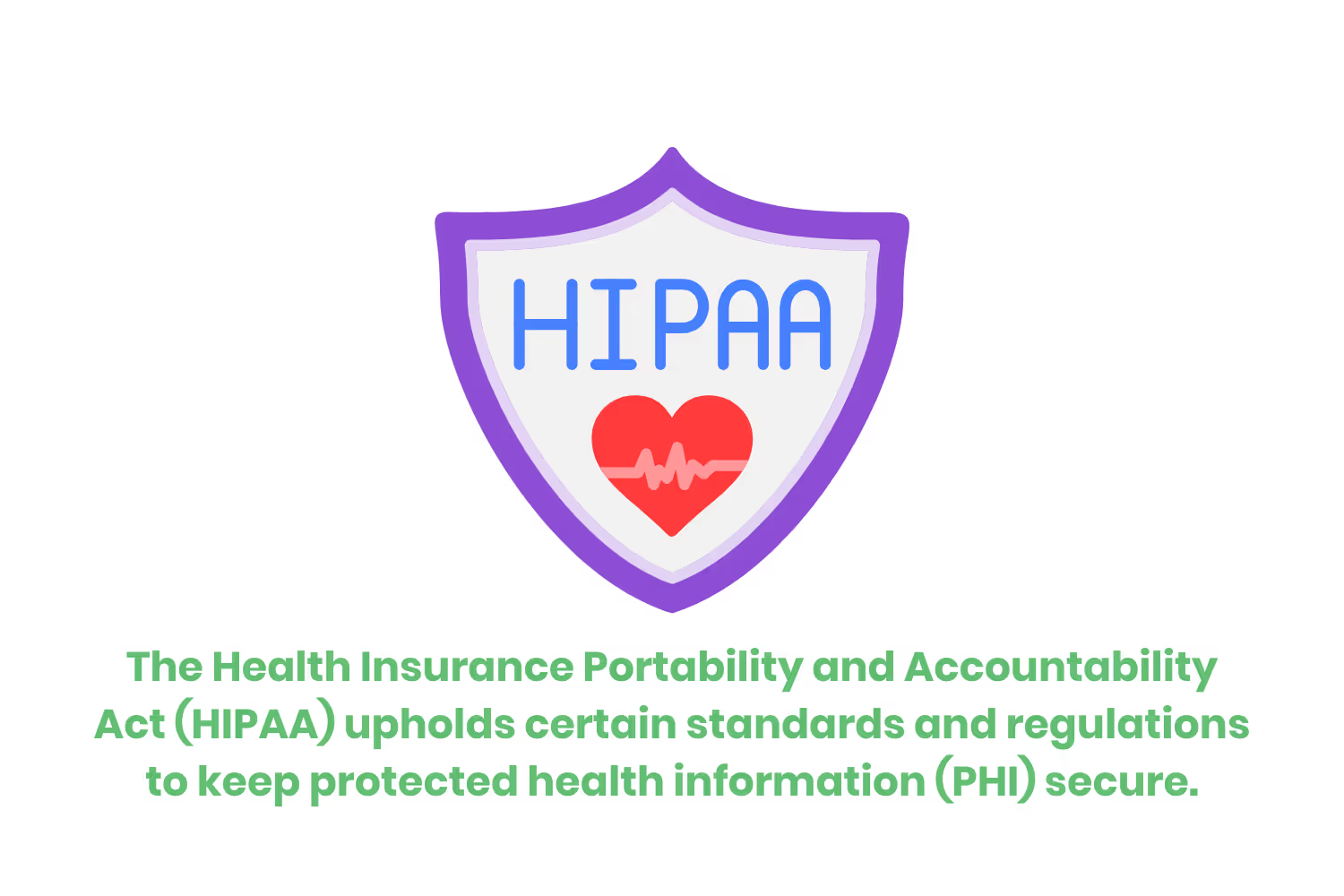
Patient invoices usually have protected health information (PHI) in them. The Health Insurance Portability and Accountability Act (HIPAA) upholds certain standards and regulations to keep this information secure. Using a secure customer portal is the best course of action in this case. Having a link to a secure encrypted website for clients to sign into to access their invoice information is ideal.
Using extra security measures such as multi-factor authentication (MFA) also helps fight against growing cyber threats.
How To Create and Invoice Email Template
Saving time means saving money. To avoid wasting time and money, create an invoice email template to have on hand. This way you can better streamline your communication with clients. You should shoot for your invoice email template to be reusable and customizable.
This makes it easier to send invoice emails to large numbers of users, with only minor adjustments to personalize the message for each individual. The main (and likely only) adjustmen is their name in the message.
What Elements Should Your Invoice Email Template Have?
To create an ideal and effective invoice email template, you should make sure to include a customizable subject line. Did you know that email open rates increased by 50% when the subject line was more personalized? Using a client’s name can make the message seem more important and less like just another piece of junk mail.
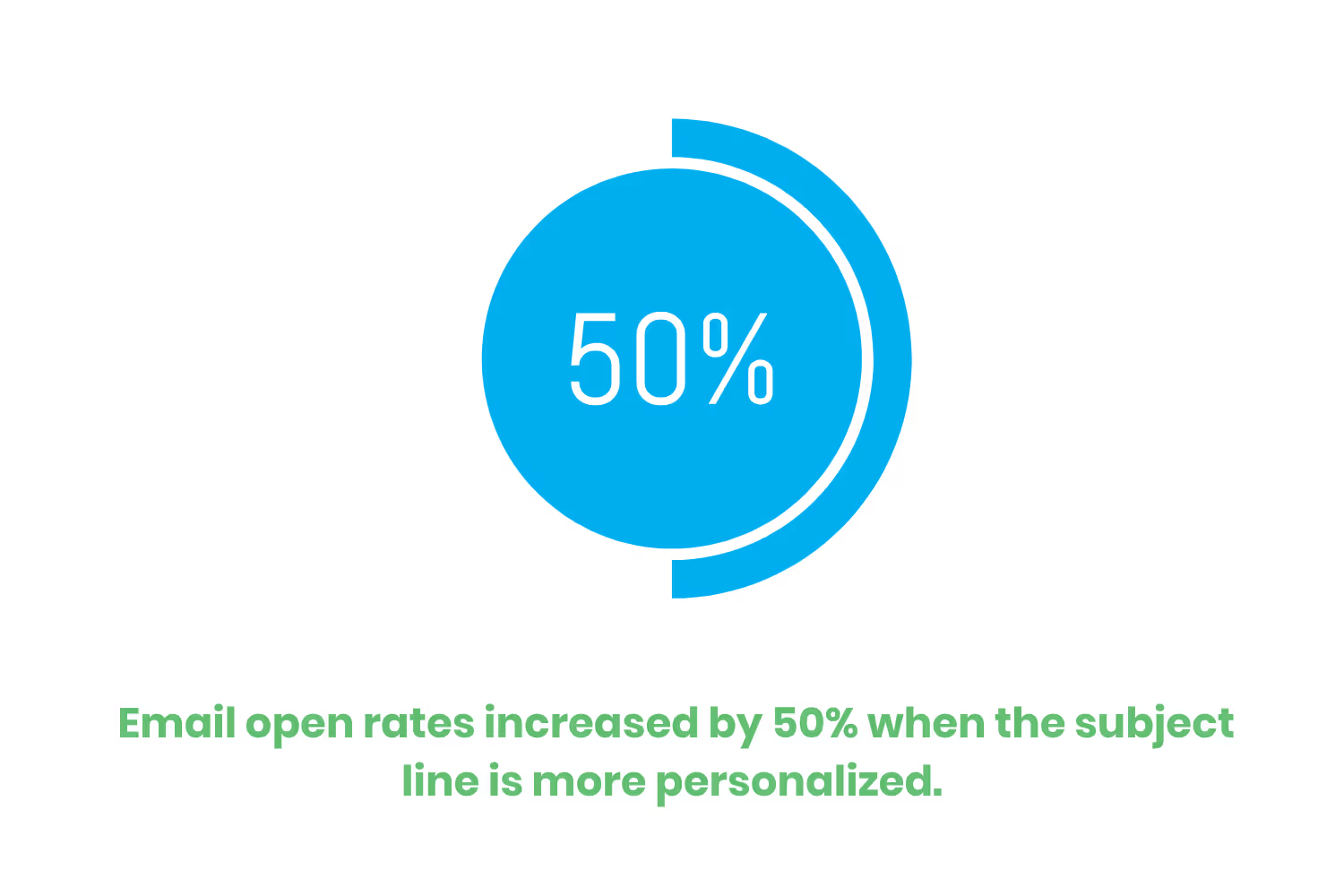
Make sure to also include space for the invoice number, due date, and payment terms. Each template should have these items to avoid any confusion for the client. There should be mention of the attached invoice or link to your secure customer portal within the message, outlining a clear call to action. Finally, remember to include a polite closing message that emphasizes the client’s next course of action. As well as your contact information for any further assistance they may need.
Example of a Well-Written Invoice Email
Here is a simple invoice template that includes the invoice number, due date, and some personalized customization:
Subject Line: Invoice Number [insert invoice number here] from [Business Name]– Due August 5, 2025
Hi [Client Name],
I hope you're well! Attached is invoice [insert invoice number here] for services completed in June. The total is $800 and the due date is August 5, 2025. If you have any questions, please feel free to contact us at [Contact Info].
Thank you,
[Your Name]
[Business Name]
[Contact Info]
What To Do If You Have an Unpaid Invoice
Sometimes a customer might miss a payment. Maybe they missed the initial email or meant to pay but life just got busy. No worries! Sending a follow-up reminder is sometimes necessary to collect your outstanding revenue.
These reminders need to be polite and friendly in tone, to assure your clientele that you aren’t upset or taking the late payment personally. The last thing you want to do is hurt your relationship with your client because you came off accusatory. This will only make it more difficult to collect on your accounts receivables (AR).
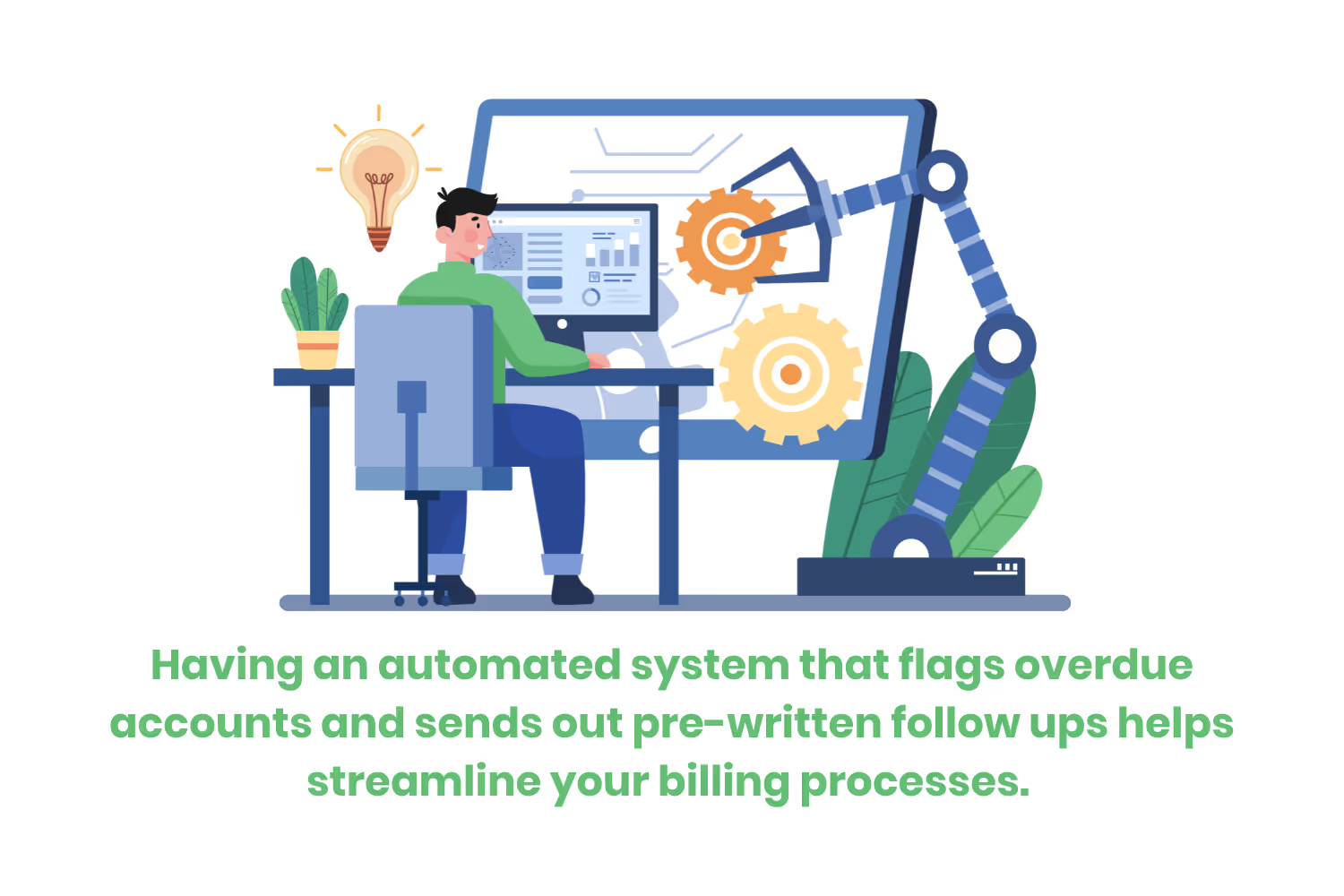
Having an automated system that flags overdue accounts and sends out pre-written follow-ups is the best course of action here. This way, you don’t have to worry about keeping up manually and putting that administrative strain on your billing team. Include the same information in your follow-up as was in the original invoice email:
- Customer name.
- Due date.
- Invoice number.
- Accepted payment methods.
- Contact information.
How To Ensure Timely Payments with Your Invoice Emails
To ensure timely payments, you should send invoices via email as soon as you complete services. This keeps the due date fresh in your mind and the client’s mind, too. Remain clear and concise in your instructions. You want to come off as professional in every invoice email message.
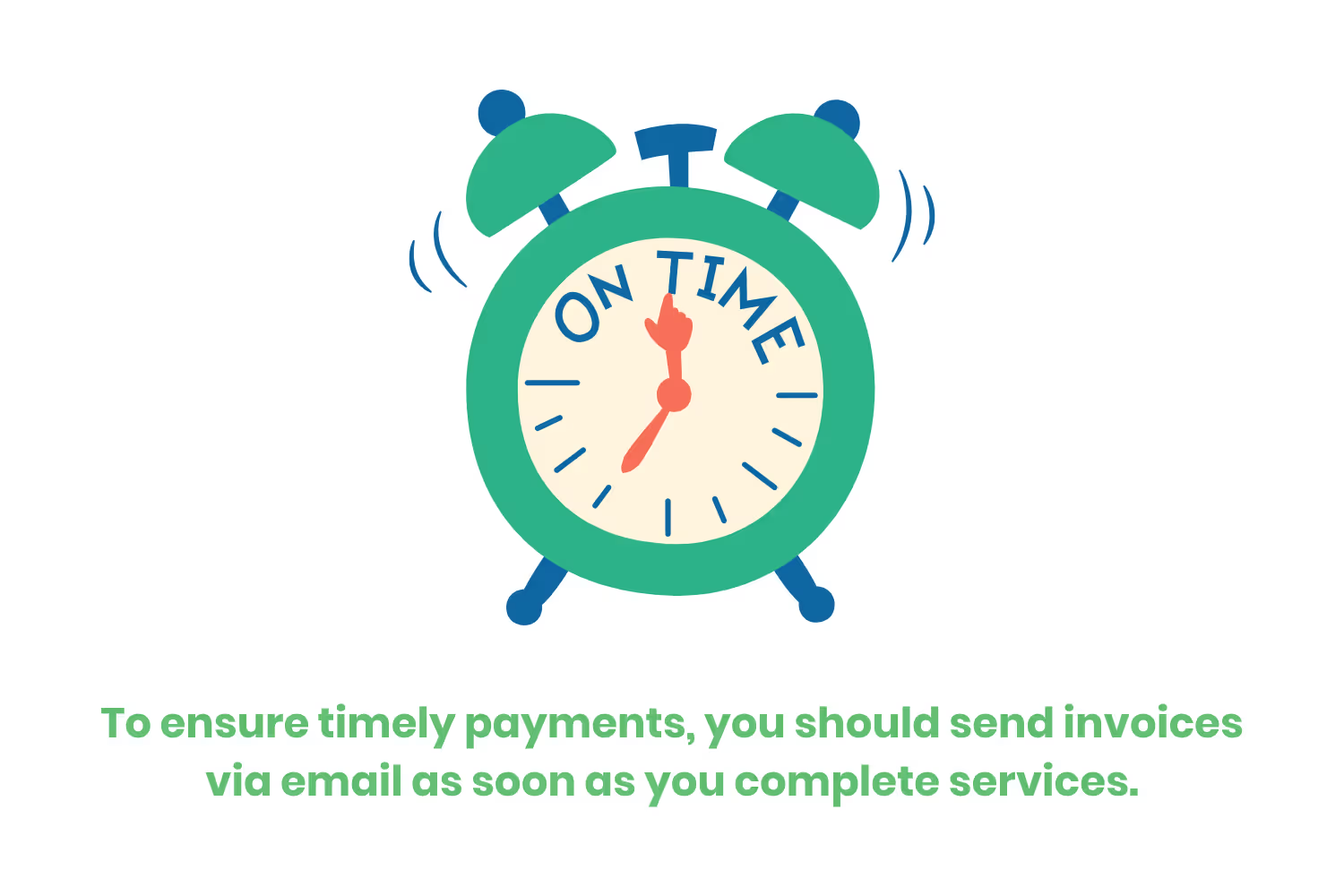
Don’t leave out the invoice due date or forget to attach the invoice. Include payment instructions and all of your accepted payment options. The more payment options available, the better chance you get paid! Avoid these other mistakes to help ensure timely payments:
- Using an unclear or generic subject line.
- Not attaching your contact information.
- Not using a proper greeting.
- Not responding promptly to any questions about the invoice.
Final Thoughts on How To Send an Invoice via Email
One of the best ways to encourage the prompt payment of services is by sending an invoice through email. Remember, sending an invoice right after you finish a job is best. Timing is key to collecting revenue!
In the case of long-term clients, consider sending a monthly invoice for better efficiency and a streamlined billing approach. You can also send an email invoice right after project milestones. No matter the timing, or whether you're sending a paper invoice or choosing to send invoices via email, refer to this blog for what to include. Well-written invoice emails not only help you get paid faster but can strengthen your relationship with clients and help build your brand.
Emphasize your product's unique features or benefits to differentiate it from competitors
In nec dictum adipiscing pharetra enim etiam scelerisque dolor purus ipsum egestas cursus vulputate arcu egestas ut eu sed mollis consectetur mattis pharetra curabitur et maecenas in mattis fames consectetur ipsum quis risus mauris aliquam ornare nisl purus at ipsum nulla accumsan consectetur vestibulum suspendisse aliquam condimentum scelerisque lacinia pellentesque vestibulum condimentum turpis ligula pharetra dictum sapien facilisis sapien at sagittis et cursus congue.
- Pharetra curabitur et maecenas in mattis fames consectetur ipsum quis risus.
- Justo urna nisi auctor consequat consectetur dolor lectus blandit.
- Eget egestas volutpat lacinia vestibulum vitae mattis hendrerit.
- Ornare elit odio tellus orci bibendum dictum id sem congue enim amet diam.
Incorporate statistics or specific numbers to highlight the effectiveness or popularity of your offering
Convallis pellentesque ullamcorper sapien sed tristique fermentum proin amet quam tincidunt feugiat vitae neque quisque odio ut pellentesque ac mauris eget lectus. Pretium arcu turpis lacus sapien sit at eu sapien duis magna nunc nibh nam non ut nibh ultrices ultrices elementum egestas enim nisl sed cursus pellentesque sit dignissim enim euismod sit et convallis sed pelis viverra quam at nisl sit pharetra enim nisl nec vestibulum posuere in volutpat sed blandit neque risus.
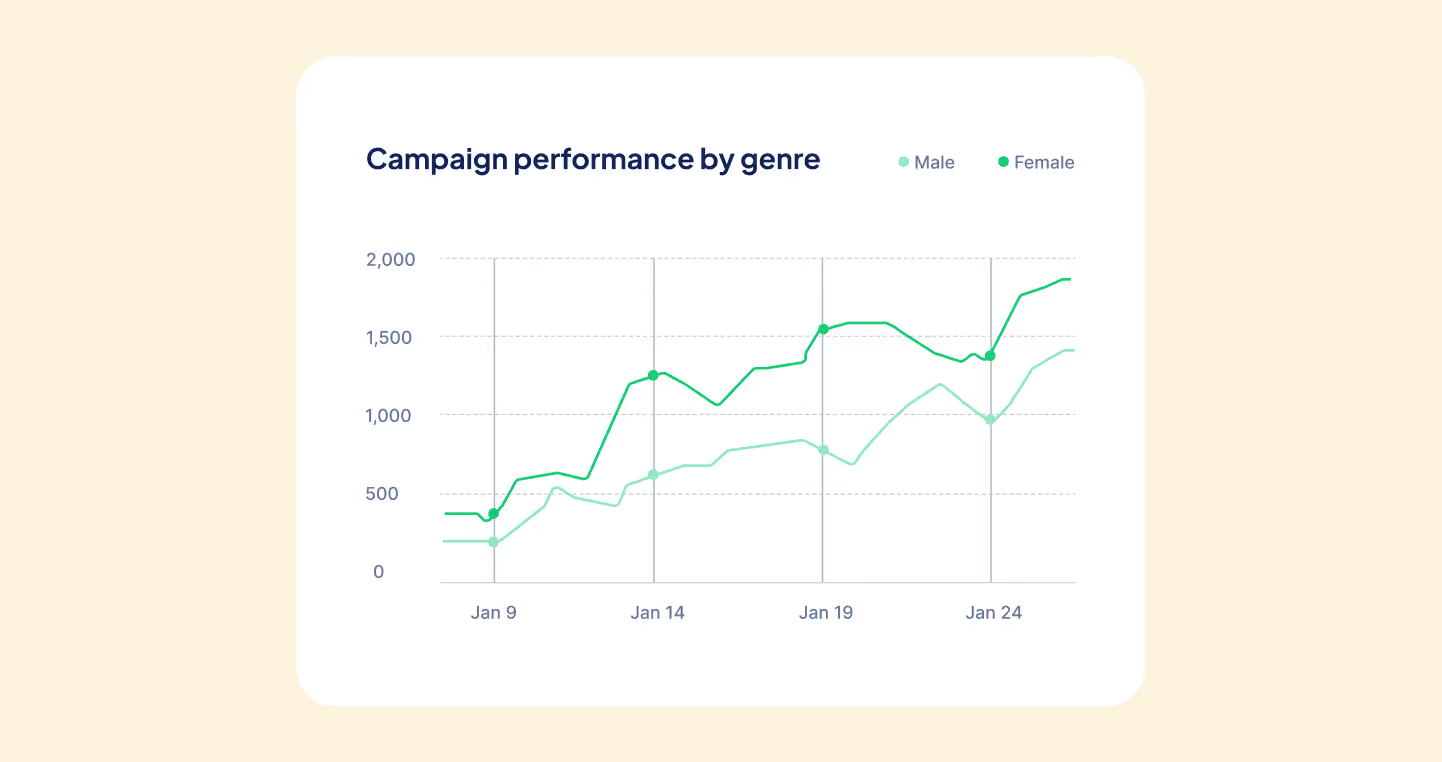
Use time-sensitive language to encourage immediate action, such as "Limited Time Offer
Feugiat vitae neque quisque odio ut pellentesque ac mauris eget lectus. Pretium arcu turpis lacus sapien sit at eu sapien duis magna nunc nibh nam non ut nibh ultrices ultrices elementum egestas enim nisl sed cursus pellentesque sit dignissim enim euismod sit et convallis sed pelis viverra quam at nisl sit pharetra enim nisl nec vestibulum posuere in volutpat sed blandit neque risus.
- Pharetra curabitur et maecenas in mattis fames consectetur ipsum quis risus.
- Justo urna nisi auctor consequat consectetur dolor lectus blandit.
- Eget egestas volutpat lacinia vestibulum vitae mattis hendrerit.
- Ornare elit odio tellus orci bibendum dictum id sem congue enim amet diam.
Address customer pain points directly by showing how your product solves their problems
Feugiat vitae neque quisque odio ut pellentesque ac mauris eget lectus. Pretium arcu turpis lacus sapien sit at eu sapien duis magna nunc nibh nam non ut nibh ultrices ultrices elementum egestas enim nisl sed cursus pellentesque sit dignissim enim euismod sit et convallis sed pelis viverra quam at nisl sit pharetra enim nisl nec vestibulum posuere in volutpat sed blandit neque risus.
Vel etiam vel amet aenean eget in habitasse nunc duis tellus sem turpis risus aliquam ac volutpat tellus eu faucibus ullamcorper.
Tailor titles to your ideal customer segment using phrases like "Designed for Busy Professionals
Sed pretium id nibh id sit felis vitae volutpat volutpat adipiscing at sodales neque lectus mi phasellus commodo at elit suspendisse ornare faucibus lectus purus viverra in nec aliquet commodo et sed sed nisi tempor mi pellentesque arcu viverra pretium duis enim vulputate dignissim etiam ultrices vitae neque urna proin nibh diam turpis augue lacus.



![[ANSWERED] What is a Long-Term Care (LTC) Pharmacy](https://cdn.prod.website-files.com/67e2b8210878abcba6f91ae6/68d687806a075a1cf64659b0_WhatisLongTermCarePharmacy_925.avif)
